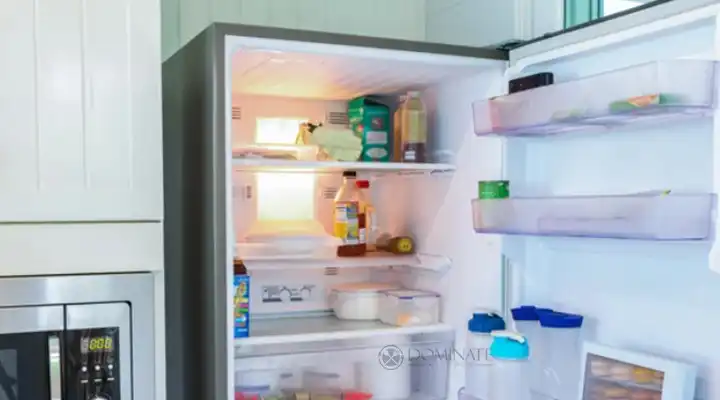Can You Put a Hot Glass in the Fridge? Is It Safe to Refrigerate Hot Glass?
A kitchen is a place where we’re always juggling multiple tasks, and it’s easy to make decisions that seem convenient at the time but can lead to unexpected consequences. One such question that frequently arises is whether it’s safe to put hot glass in the fridge.
And the answer of this question is No, you should not put hot glass in the fridge. Extreme temperature differences can cause the glass to shatter due to thermal stress.
In this article, we’ll explore why this seemingly convenient act is, in fact, a bad idea. We’ll delve into how hot glass reacts inside the fridge, provide alternative methods for cooling hot glassware, and address some frequently asked questions on this topic.

Why You Cannot Put a Hot Glass in the Fridge?
Here’s why it’s a bad idea, no matter how convenient it may seem:
Thermal Shock
Glass is a material that’s highly sensitive to rapid temperature changes. When you subject hot glass to the cold environment of a refrigerator, it’s at risk of experiencing thermal shock. This sudden change in temperature can cause the glass to crack or shatter, potentially creating a mess and rendering your glassware unusable.
How Hot Glass Reacts Inside the Fridge?
When hot glass is placed inside a refrigerator, several things can happen:
Rapid Cooling
The cold environment inside the fridge causes the outer layers of the glass to contract quickly, while the inner layers remain hot. This temperature disparity can result in the glass cracking as it struggles to adapt to the swift change.
Condensation
Hot glassware inside the fridge can also create condensation, potentially causing moisture to collect on the glass’s surface. This condensation may not only damage the glass but also lead to issues with the food stored nearby.
Alternatives to Cooling Hot Glass
If you need to cool down hot glassware, consider these alternative methods:
Room Temperature Cooling
Allow the glass to cool naturally to room temperature on a heat-resistant surface. This gradual cooling process minimizes the risk of thermal shock.
A Water Bath
Submerge the hot glass in a container of lukewarm or tepid water. This method helps dissipate heat more evenly and prevents rapid temperature changes.
Use a Cooling Rack
Placing hot glassware on a cooling rack or a trivet can aid in faster and safer cooling by promoting air circulation.
Here are some additional tips:
- Cut food into smaller pieces so that it cools more quickly.
- Place food in shallow containers.
- Stir food occasionally to help it cool evenly.
- Do not overcrowd the fridge. This will prevent air from circulating freely and slow down the cooling process.
Can I put warm glass in the fridge instead of hot glass?
It’s generally safer to avoid putting any glass that is significantly hotter than room temperature in the fridge. Warm glass is less likely to experience thermal shock, but it’s still advisable to let it cool to room temperature before refrigerating.
Can I put the glass in the freezer?
Similar precautions apply to the freezer. Avoid placing hot or even warm glass directly in the freezer, as the rapid temperature change can still cause issues. Let the glass cool down gradually before attempting to freeze it.
Can I put a glass container with a lid in the fridge while it’s still hot?
It’s better to remove the lid or cover to allow for better airflow and cooling. The same principles of avoiding rapid temperature changes apply to glass containers with lids.
What if I accidentally put a hot glass in the fridge?
If you accidentally put a hot glass in the fridge, remove it immediately. Be careful not to touch the glass, as it may be hot enough to burn you.
What types of glasses are more likely to break when put in the fridge?
Glasses made of thin or tempered glass are more likely to break when put in the fridge. Glasses made of borosilicate glass, such as Pyrex, are more heat-resistant and less likely to break.
In a Nutshell
In a nutshell, while it may be tempting to expedite the cooling process by placing hot glass in the fridge, it’s a bad idea due to the risk of thermal shock. Instead, opt for safer cooling methods, such as room temperature cooling, a water bath, or using a cooling rack. By taking these precautions, you can ensure that your glassware remains intact and functional, while also preventing potential safety hazards.






